shirataki noodles? In this post, we’re gonna make three mind-blowingly simple and delicious shirataki noodle dishes. Tanoshimi ni shiteru? Are you excited?
Shirataki Noodles | 3 Delicious and Healthy Japanese Recipes
Have you ever seen food that looks so delicious that it actually makes your mouth water?
For example, these three dishes that we’re gonna be making today
These three shirataki noodle dishes might just change your life, if shirataki noodles haven’t already…
Plus, I’m going to give you a few tips of mine for making your shirataki noodles a delicious success every single time you try to make a shirataki dish!
What are shirataki noodles?
Shirataki noodles, also known as konjac noodles, are a fantastic addition to your cooking repertoire, especially if you’re looking for a healthier alternative to traditional pasta dishes.
These noodles are made from the konjac plant, which is native to Asia and known for its health benefits.
One of the standout features of shirataki noodles is that they are gluten-free, making them suitable for those with gluten sensitivities or following a gluten-free diet.
The beauty of plant-based Japanese food
Can you guess what plant-based Japanese food has going for it?
Well, I’ll give you a few seconds…
Uno, dos, tres…
And if you couldn’t think of anything that it has going for it, I’ll tell you one thing.
And that is color.
If you compare plant-based Japanese food to meat and fish, which are usually in the shade of brown, chairo, which is the color of a cha, or
Or even red, which would be somewhat like the color of raw meat raw fish, raw tuna, or maybe even like an off-white, or some variants in-between, between brown and red.
And that’s a very different color palette as compared to plant-based Japanese food, which we are going to be making today.
What plant-based Japanese food has going for it is the rainbow of colors because we’re going to be using all kinds of different vegetables.
If you can imagine the colors of the rainbow, that is what we are going to be using to our advantage today!

And yeah, I suppose you could always add food coloring to your meats or your seafood. But why would you do that? I have no idea why you would do that, but you could do it
And by the way, did you know that you can actually get your food colored naturally from your vegetables?
I’ll be showing you one example in one of our shirataki noodle dishes today.
And if you have a few other ideas, perhaps you’re a little bit more experienced in this area than others let me know in the comments below how you like to color your vegetables naturally. I’d be curious to see what you guys are using! Au naturale!
Just like these pink shirataki noodles.
Curious how they got pink? You’ll find out in just a little bit.
And no, they ain’t red velvet. But who wants red velvet when you can have shirataki noodles?
Sometimes I like both.
But today, I’m in the mood for my shirataki noodles
So here we are with our first dish.
Can you imagine what life would be like if we didn’t have noodles as jiggly as these?

Shirataki Vegetable Soup
For today’s vegetable soup, what we’re going to be doing is using some shirataki noodles
About one pack that has been parboiled in some boiling water, and then drained. You might want to cut these up into smaller pieces because they do tend to get pretty long, as you may know.
Let me know what you guys think of the first dish. If you have any questions, comments, or suggestions, please leave them below!
Always interested to hear what you guys think.
And if you have any tips, I’m sure we could all learn from each other!
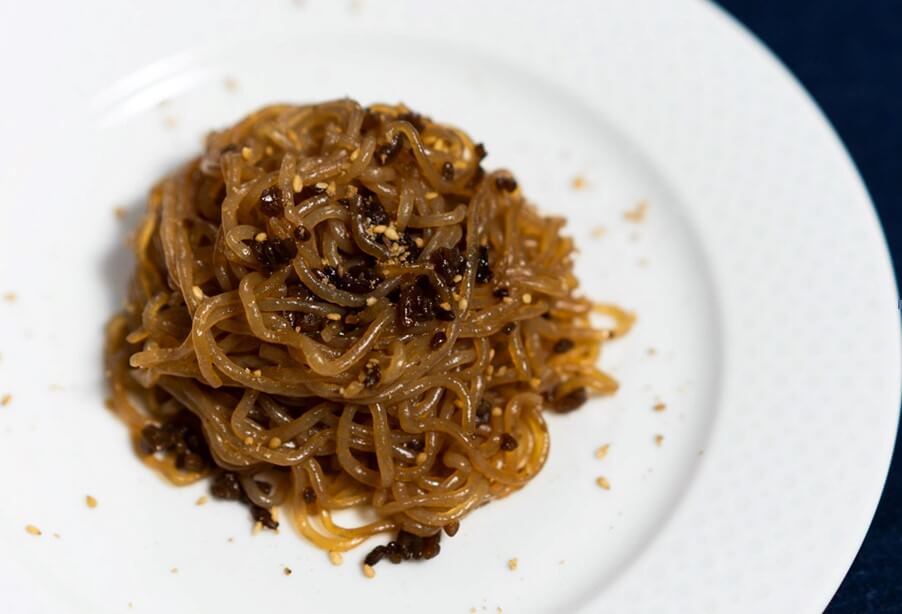
Shoyu (Soy sauce) Koji stir fry
For this second dish, we are gonna be making another delicious shirataki noodle dish. And this one’s gonna be just as simple and just as delicious!
Now what we’re gonna be making is a shirataki itame.
Have you ever made any kind of a stir-fry or itamemono (stir fry) with shirataki noodles?
That’s what we’re doing today, and it’s a very versatile ingredient.
It’s made from the same stuff that they make those konnyaku blocks. And they’re actually negative calorie foods
So it takes a little bit more energy to digest this because it’s actually a negative-calorie food.
It’s considered a negative-calorie food or a zero-calorie food because your body does not get energy from it. It expends energy trying to digest it.
And if you like japchae, which is the korean stir fried noodles, this is a much lighter version because we’re not using too much oil.
But it’s very reminiscent of Japchae. It is actually one of my favorite Korean dishes. It’s very much like a comfort food.
Shirataki noodles hit the spot without all of the effort in terms of preparing all those vegetables and stuff.
So, if you feel like you’re in a pinch, maybe it’s a weeknight, this could be a good alternative
Did you know…
…that shirataki noodles come in very different shapes and colors?
Sometimes, you can buy them pre-wound up in sort of like a nice ribbon/ball, which is used for nabemono, Japanese style hot pot.
And you can actually get the block form, which is also known as konjac or konnyaku.
Konnyaku is the block form of the shirataki noodles. They’re made from the same plant, konjac.
Konnyaku the Japanese term for it. And it’s just as jiggly, but a little bit more solid because it is a block form.
And we might be using a few of those konnyaku blocks for a different recipe.
Ikaga Deshou Ka? What do you think? Would you be interested?

Vegetable stir fry Japanese style
The third dish that we’re going to be making today is one of my favorites.
And it’s super-light and very delicious, and packed with a ton of flavor.
If youre used to heavier or oilier stir frys, you might be in for a pleasant surprise with this one.
It’s a great way to enjoy your shirataki noodles, if you’re needing some shirataki recipe inspiration.
If one of these three noodle dishes didn’t get you a little bit hungry or inspired to cook some shirataki noodles, then I’m going to be a little bit sad.
But hopefully, I did somewhat of a decent job. And if you may be trying one of these in the near future, I’d be curious which one it is.
Let me know which one you think you’ll be trying first in the comments below!
Frequently Asked Questions
Are shirataki noodles healthy?
Yes, shirataki noodles are generally considered healthy. They are made from the konjac plant, which is low in calories and carbohydrates. Shirataki noodles are often recommended for those who are watching their calorie intake or following specific diets like low-carb or keto.
Are shirataki noodles gluten-free?
Another benefit of shirataki noodles is that they are gluten-free. This makes them suitable for individuals with gluten sensitivities or those who follow a gluten-free diet due to conditions like celiac disease.
Are shirataki noodles keto?
Shirataki noodles are extremely low in carbohydrates and calories, making them a popular choice for individuals following a keto diet. In fact, a typical serving of shirataki noodles contains less than 1 gram of net carbs. Net carbs are calculated by subtracting the fiber content from the total carbohydrates since fiber is not fully absorbed by the body.
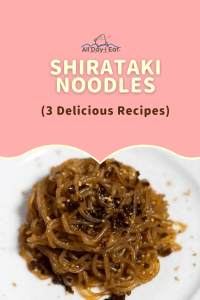



Konnichiwa! (Hello!) I'm Pat Tokuyama, a Japanese tofu cookbook author, who travels for music, food, and adventure. If you like Japanese tea, checkout some of the newestorganic japanese tea, matcha bowls and noren and more!
** Curious about the Plant Based Japanese Cooking Club? ** Learn more here!
so now you have 3 recipes to cook japanese shirataki noodles
so they are unforgettably delicious!
and now you know cooking a good shirataki dish (japanese style) is all about the seasoning and a few key methods of preparation.
if you haven’t yet tried any shirataki or miracle noodle recipes with japanese flavors, let one of these be one of your first so we can set the bar nice and high in terms of flavor and deliciousness!
now that you have 3 tasty japanese shirataki noodle recipes…
which will you be trying first?
lmk in the comments!
PS if you havent yet subscribe so you dont miss any of my new japanese cooking videos


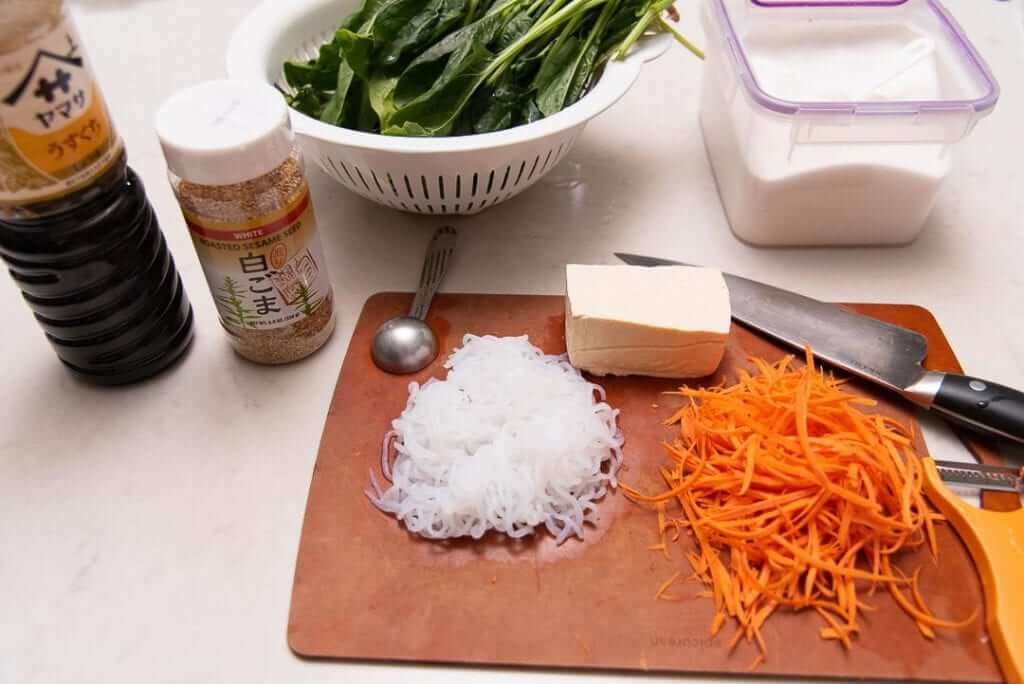


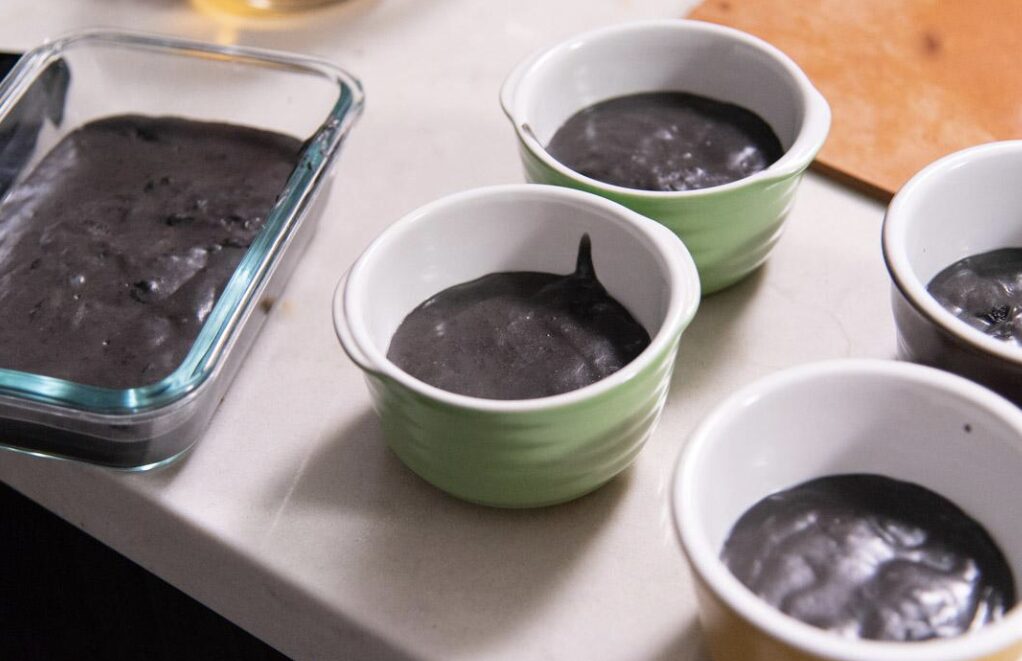
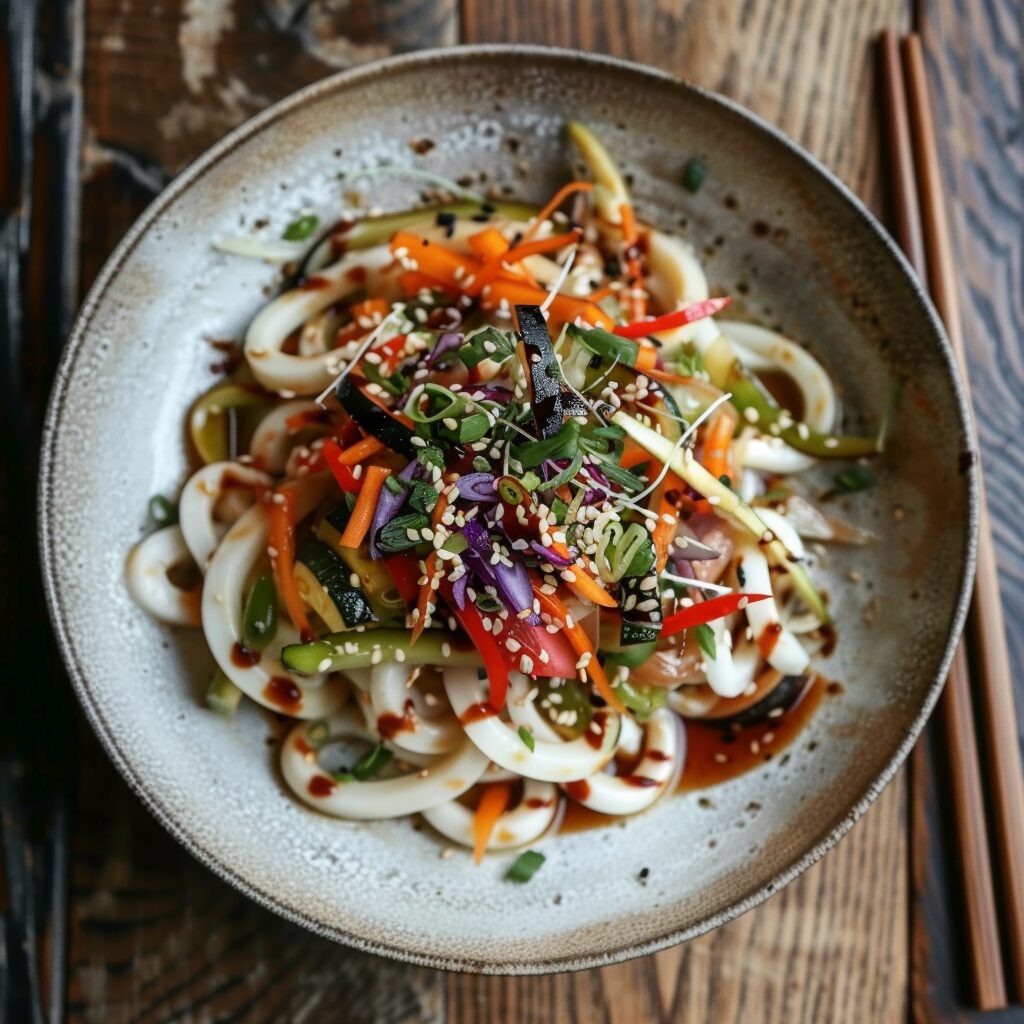

Konnichiwa! (Hello!) I'm Pat Tokuyama, a Japanese tofu cookbook author, who travels for music, food, and adventure. If you like Japanese tea, checkout some of the newestorganic japanese tea, matcha bowls and noren and more!
** Curious about the Plant Based Japanese Cooking Club? ** Learn more here!